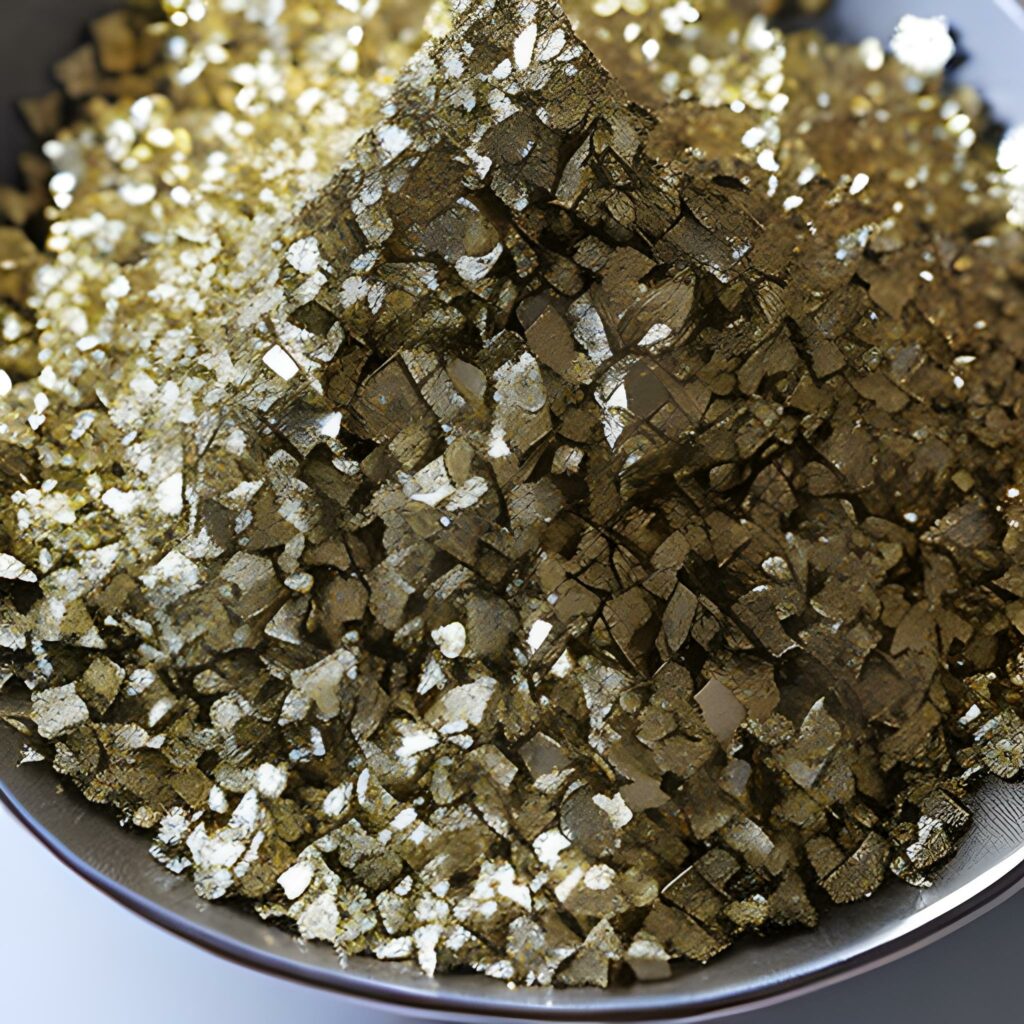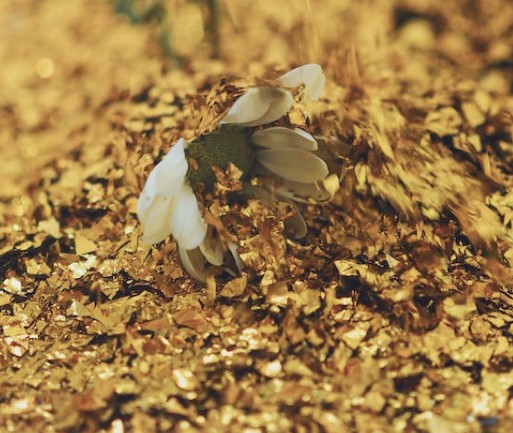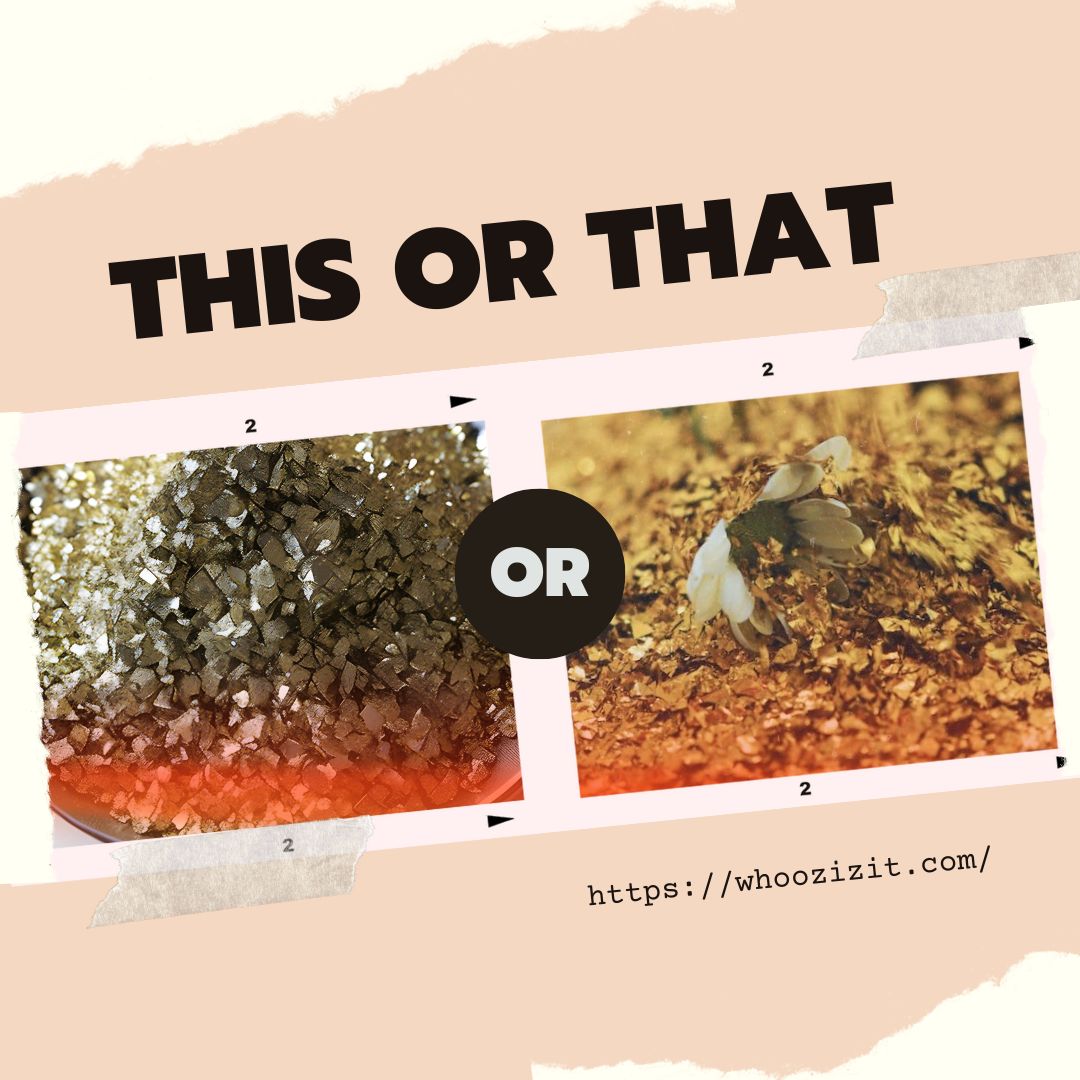Have you ever heard about fools’ gold? Well, several explorers have been fooled in the past and in recent times by thinking they found gold but instead having a compound that looks so similar to gold.
Pyrite, to an amateur, looks similar to gold. However, these are very different compounds. I know what you are thinking, how then can you tell gold flakes from pyrite? That is the sole purpose of this article.
We are going to look at pyrite flakes vs gold flakes so that you get to know which is which. Let’s get started.
What is Pyrite?

Pyrite is a compound of iron and sulfur. Its chemical formula is FeS2. It is a yellow mineral with a shiny luster and looks very similar to gold. Pyrite is the most common of the sulfide minerals.
It was given the name fools’ gold because of the many times it has been mistaken for gold. Its color, luster, and high specific gravity cause confusion. Pyrite is used for the production of Sulphur dioxide among many others.
What is Gold?

Gold, on the other hand, is a chemical element in the periodic table. Its chemical name is Aurum, Au. It is one of the most highly valued metals in the world. It is yellow when in a mass. It is mostly used in jewelry making among many other uses such as a symbol of wealth.
So how can you tell gold flakes from pyrite? How can you spot the difference? There are significant differences between gold and pyrite. Differences that can be seen with the naked eye. Let me show you how to spot the differences.
Pyrite Flakes vs Gold Flakes
As a beginner, it might not be as easy to differentiate gold and pyrite compounds. However, practice makes perfect. Some of the physical differences are evident in:
- Color
- Density
- Hardness
Color
For someone who has had experience in dealing with minerals, identifying the difference between pyrite and gold by observing color is very easy. Also, observing the behavior of their color under sunlight will give you their difference. You don’t have to be experienced to notice the difference.
Gold and Pyrite have quite similar colors. They both shimmer in the sun. However, pyrite shines more than gold. How so? You may be wondering. While in the sun, gold maintains a solid and firm color while pyrite shines better than gold. This is because pyrite forms isometric crystals that reflect light so much better allowing more shimmering.
Hardness
This is the most outstanding difference between gold and Pyrite. It is simply observing the behavior of the metal under pressure. Does the metal bend or break?
Gold is a highly ductile and malleable metal. This means that the metal can undergo tensile and compressive stress without breaking. Gold has a hardness of 2.5 on the Mohs scale.
Pyrite, on the other hand, is harder with a hardness of 6 to 6.5 on the Mohs scale. What does this mean? With the hardness of gold, it cannot scratch a copper surface while pyrite will scratch the copper surface very easily. It also means that when hit with a big and heavy object, pyrite will shatter. Gold will simply be flattened. Also, gold can easily be scratched by copper, unlike pyrite.
Density
The specific gravity of gold is greater than that of pyrite. It was observed that the two compounds had different qualities due to their densities. While in a sifting pan, gold tends to settle at the bottom of the sand in the pan.
Pyrite, however, tends to move around the top of the sand freely. This indicated that gold is denser than pyrite with a density of 19.3 grams per cubic centimeter. Pyrite has a density of 4.8 to 5 grams per cubic centimeter.
Streak test
This is one of the surest ways of knowing whether you are dealing with gold or pyrite. What is a streak test? Let me help you understand. A streak test is used to determine the color of a mineral in powder form.
It is usually done by rubbing a portion of the desired mineral on a piece of unglazed porcelain, the streak plate. This produces a small amount of powder, the streak, on the streak plate.
Gold has a yellow streak while pyrite has a greenish-black streak. Streak plates are readily available in mineral shops.
Shape
Most of the time, gold particles are usually found with slightly round edges. This might be accrued to the fact that gold is highly malleable. It is therefore shaped by all the matter it interacts with while in the ground.
Pyrite, is, however, usually found in angles or cubic faces. This needs extra care in monitoring since gold can exhibit an angular appearance if it is in combination with other metals.
By now, you can as well differentiate between gold and pyrite if you are keen enough to observe their qualities. Below are other general differences between the two compounds.
- Pyrite is a covalent chemical compound formed from iron and sulfur. Gold, however, is an element, a pure metal in the periodic table. It is a transition element.
- Pyrite, being a chemical compound reacts with most chemical reagents. In contrast, gold does not react with water, moisture, or acids.
- Gold is a metal that conducts electricity. On the other hand, pyrite is a semiconductor.
Conclusion
Let’s recap: Pyrite is a chemical compound that physically resembles gold but with less value compared to gold. It is therefore very important to know the difference. You don’t want to be excited thinking you have gold when you have pyrite.
One of the most effective methods of differentiating the two is by using the streak method and observing the hardness of the two. Color is another method used to differentiate gold and pyrite.
However, this is not such a good test to distinguish them since they are similar in color. Now you have all the information you need on differentiating gold and pyrite.

